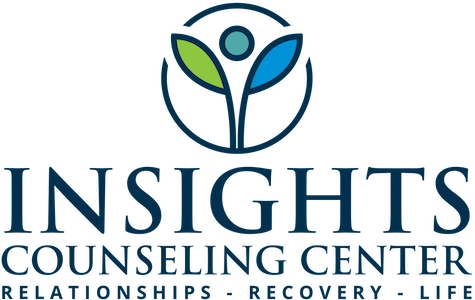
ERP Therapy
What is ERP Therapy?
Exposure and Response Prevention (ERP) Therapy can be a beacon of hope for those navigating the complexities of anxiety, compulsions, and trauma. This evidence-based approach, rooted in the principles of Cognitive Behavioral Therapy (CBT), is both a testament to human resilience and a practical path towards healing.
ERP operates on a foundation of compassion and empowerment, designed to gently guide you through the process of facing your fears. The "exposure" component involves gradually, and safely, confronting the thoughts, situations, or memories that spark distress. This is done in a controlled and therapeutic setting, ensuring you feel supported at every step.
The "response prevention" aspect encourages a new way of interacting with these distressing thoughts or situations. Unlike avoidance, which temporarily relieves discomfort but may increase anxiety over time, ERP empowers you to cultivate a different response. This process aids in breaking the cycle of fear and avoidance, fostering a sense of mastery and confidence in your ability to cope.
In embracing ERP therapy, you're not just learning to confront fear; you're reclaiming your life from it. Our role, as therapists, is to provide a compassionate framework for this journey, recognizing your strengths and supporting your growth. ERP isn't just about managing symptoms— it's about rediscovering your resilience and capacity for joy.
ERP Is a Highly Effective Therapy for Anxiety & OCD
For those navigating the often turbulent waters of Anxiety and Obsessive-Compulsive Disorder (OCD), ERP offers a structured, evidence-based approach to therapy. By gently encouraging you to face the very thoughts, situations, or objects that trigger your anxiety or compulsions, ERP empowers you to regain control over your reactions, reducing the strength of these triggers over time. This method does not just help manage symptoms; it goes to the heart of your experience, offering a path toward lasting resilience and peace.
Would You Like To Know More? Reach Out To Us!
Navigating Healing Through ERP: A 7-Step Model by Dr. Becky Beaton-York
We journey with you through the healing process with an approach grounded in understanding, compassion, and proven strategies. Drawing from the expertise of Dr. Beaton-York, our Exposure and Response Prevention (ERP) model is tailored to support individuals confronting emotional trauma, anxiety, and compulsive behaviors. Let us walk you through the stages of this transformative journey.
1. Assessment: Understanding Your Story
Our first step together is to explore and understand the nuances of the challenges you're facing. This involves a thoughtful assessment where we listen intently to your experiences. If trauma lies at the heart of these challenges, identifying it becomes crucial. This initial step ensures we're not just treating symptoms but addressing the root of the distress, offering a tailored pathway to healing.
2. Motivation: Discovering Your Why
Healing is a journey that requires energy, dedication, and, most importantly, motivation. Our second step is to help you uncover and articulate your unique motivators. This is your 'why'—the personal driving forces that will keep you engaged and resilient throughout the therapeutic process. Understanding what matters most to you helps in sustaining motivation, even when the journey feels challenging.
3. Preparation for ERP: Building a Foundation
Before stepping into the heart of ERP, we lay a foundation of knowledge and strategies designed to equip and empower you. This preparation includes psychoeducation, introducing you to the '3 Cs' (catch it, check it, change it), embracing uncertainty, and exploring Wilson's Mindset. We also introduce elements of Acceptance and Commitment Therapy (ACT), mindfulness, and self-compassion. These tools are not just theoretical concepts but lifelines—practical strategies for managing thoughts and emotions during therapy and beyond.
4. Creating a Hierarchy: Structured Exposure Plan
Together, we will construct a personalized hierarchy of fears or triggers. This hierarchy serves as a roadmap for your ERP therapy, outlining the steps we'll take from lesser to greater challenges. It's a structured approach that ensures we progress at a pace that feels manageable and empowering to you.
5. Beginning ERP: A Step into Healing
With a foundation in place and a clear path ahead, we begin the central work of ERP. This process starts with imaginal exposure, where you're guided through confronting fears in a safe, controlled mental space. We may also incorporate interoceptive exposure—facing bodily sensations that trigger anxiety—and in-vivo exposure, which involves facing real-world situations. This structured exposure is designed to reduce the power these experiences have over your emotions and behaviors.
6. Preventing Avoidance and Safety Behaviors
A cornerstone of ERP is learning to face fears without falling back on avoidance or safety behaviors—actions you might use to temporarily reduce anxiety but that ultimately reinforce fears. Together, we will work on strategies to prevent these behaviors, gradually reducing the need to rely on them and strengthening your confidence and coping skills.
7. Repetition: The Path to Mastery
Healing and growth in ERP come through repetition. We will revisit and reinforce the steps, exposures, and strategies, deepening your mastery and control over the process. Each repetition is an opportunity for learning, growth, and a step closer to reclaiming your life from the clutches of trauma, anxiety, or compulsions.
Recent Posts
Our Background In ERP Therapy
Sara Warner began working with ERP in 2023 and sought out professional consultation to provide specialty care. In 2024, Emily Johnston and Teresa Prince took training from Dr. Becky Beaton-York and began additional consultation monthly to provide care to clients struggling with anxiety and compulsions with this evidence based treatment modality. ¹
Why We Started Offering ERP
Our dedication to providing compassionate and effective care drives us to constantly evolve and deepen our understanding of mental health. Recognizing the diverse challenges faced by those who come to us—be it unwanted intrusive thoughts experienced by individuals of all ages, the deep-seated impact of trauma, or the intricate dance of addiction and anxiety—we acknowledged the need for a therapeutic approach that addresses these aspects holistically. This understanding led us to adopt and offer Exposure and Response Prevention (ERP) therapy.
The decision to integrate ERP into our services stems from our observation of the profound interplay between trauma, anxiety, compulsions, and rituals in the lives of those we support. These are not merely symptoms but are deeply impactful experiences that shape behavior, thought patterns, and emotional well-being. Our goal was to offer an evidence-based, structured therapy that not just addresses but actively works through these challenges, hence empowering our clients toward a path of healing and resilience.
ERP & Neurofeedback
This combination of Exposure and Response Prevention and Neurofeedback offers a harmonious healing experience. When neurofeedback and ERP are combined, they offer a holistic healing experience that addresses both the physiological and psychological aspects of anxiety and trauma. Neurofeedback lays the groundwork by alleviating the over-active alarm systems of the brain, making individuals more receptive to the therapeutic benefits of ERP. In contrast, ERP builds on this calmer mental state, equipping individuals with the skills and strategies to manage their responses to triggers. Together, they form a comprehensive approach that not only diminishes the power of intrusive thoughts and anxiety but also empowers individuals to lead a life defined by resilience, understanding, and growth.








